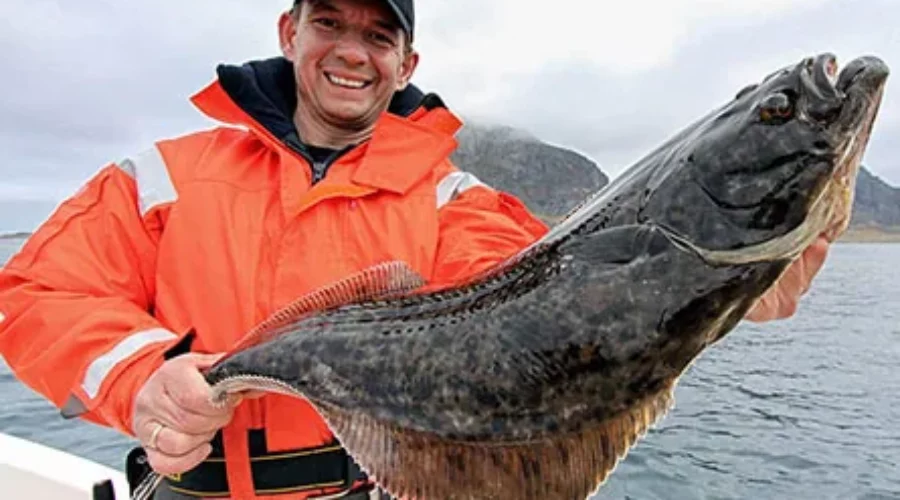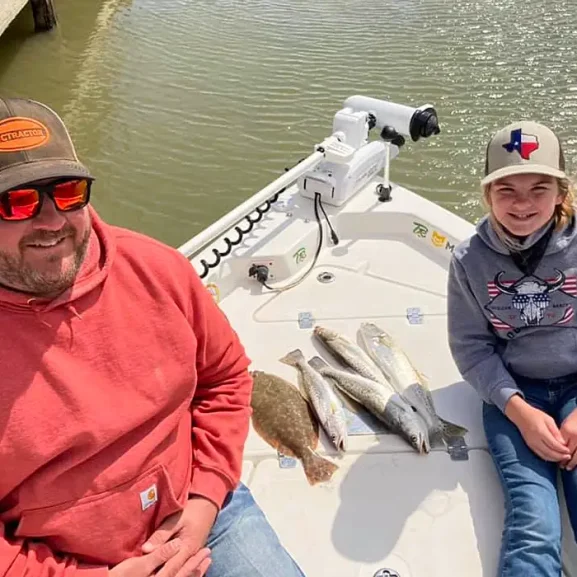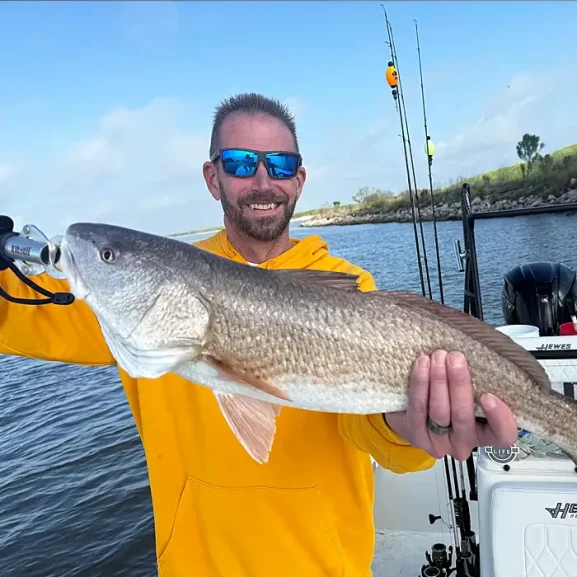Alaska Halibut Fishing: An Unforgettable Experience
One of the most sought-after fish by anglers coming to Alaska is the North Pacific Halibut, known as “The Chicken of the Sea.” They can be found all over Alaska’s extensive coastline. They are a voracious predator eating anything that moves near them and, because of their size, have few predators; Man, Sharks, and Killer Whales. They can grow to enormous sizes, and Halibut is one of the tastiest fish in the sea, with a sweet and mild flavor and a snow-white white color. It is a prize fish in many of the finest restaurants throughout the country and the world.
Halibut Size
Large Female Halibut are known as “Barn Doors,” “Hogs,” or “Soakers” and can be of massive size. Classified as any Halibut over five ft. and weighing 100 pounds. The largest are over eight ft. in length and over 500 lbs in weight
Male Halibut are called “Chickens.” They rarely get to be over three ft. in size and rarely over 50 pounds. Halibut, especially over 80 pounds, can be very dangerous to bring into the boat. As a result, many captains and charters dispatch them before bringing the fish onboard. These Halibut are known as “Shooters.” But while there are instances of Barn Doors being caught, the average Halibut caught are males with an average size of 20-30 pounds when reeled in.
The Top Destinations in Alaska to Catch Halibut
Homer, Alaska
Known as the “Halibut Capital of the World,” Halibut fishing is a way of life for all locals. Charters take you offshore for “Chicken” Halibut or further out for “Barn Doors.” Homer is located in the South-Central region and very near the fishing grounds in lower Cook Inlet and Kachemak Bay. Most days on a Homer Fishing Charter, you will catch your limit of two Halibut. When planning a charter in Homer, prepare for a full day because few half-day trips are on offer, available trips lasting 8-10 hours.
Kenai, Alaska
Kenai is a remote fishing town where the Kenai River empties into the Cook Inlet. The Kenai Peninsula is one of the best places in Alaska to fish for Halibut. Cook Inlet Halibut can be found in shallow water as little as 70 feet or as deep as 300 feet, and the fishing grounds are just 12 miles offshore. Your Kenai Peninsula Fishing Charters will know where and when to go for your best chances to land a large fish.
Ketchikan, Alaska
On the Southeastern side of Alaska, almost on the Canadian border, is the fishing town of Ketchikan. While it is well known for its Salmon fishing, there is still excellent Halibut fishing here. The waters here are protected, so the seas are calm when going out to the fishing grounds. Some of the best Halibut fishing is found in the waters of Ketchikan. Ketchikan Fishing Charters know all the holes and spots where you can find some big ones.
Seward, Alaska
Seward is located on the Eastern side of the Kenai Peninsula at the north end of the highly productive Resurrection Bay. Halibut are found in the Bay’s waters year-round but tends to be small to medium-sized. But Seward Fishing Charters go further out the Bay and towards the Pacific Ocean to try to find the oversized “Barn Doors.” Seward Harbor is a jumping-off point for Charters going out to Resurrection Bay and the Peninsula.
Valdez, Alaska
At the head of a fjord in Prince William Sound is the small town of Valdez. Valdez is famous for its infamous oil spill, but it should be known for its fishing. The Valdez Arm, a body of water leading into the Sound, is an excellent place for Halibut fishing. There are large Halibut in the waters of the Arm and Sound. A Valdez Fishing Charter will take you out into the Sound for a day of fishing you will not forget.
Sitka, Alaska
Sitka has some of the best Halibut fishing in Alaska, taking up almost two large islands. There are plenty of coasts and fishing spots to venture to, and the fish, on average, are 25 – 50 pounds, but 400 pounders have been pulled in from these waters. Sitka Fishing Charters will take you where you need to go for your best chance of landing a big one.
How to Catch Halibut in Alaska
For fishing, you first need to find spots (Halibut Holes) where the fish will be. You should look for areas where a drop-off occurs, underwater bums, and rocky bottoms. Flat areas will just be a waste of time so look for sloping spots that ultimately lead to down-hill ledges and shelves. These are spots with baitfish where Halibut lie in wait to gulp down anything that moves near them.
There are two main techniques implemented by charter fishing captains all over Alaska. You can either anchor to the bottom or slowly drift over areas where the fish are. Both methods have their pluses and minuses.
Bottom Fishing
Bottom Bait Fishing with Circle Hooks
This is the primary technique for Halibut Fishing. One thing you have to do is anchor yourself to the bottom. Circle hooks are unique in Halibut fishing because once you get a bite, you do not immediately yank the line to set the hook. Instead, you must wait for the fish to take the bait, then jerk up. You will lose the fish if you yank before it has gulped.
There are two main techniques implemented by charter fishing captains all over Alaska. You can either anchor to the bottom or slowly drift over areas where the fish are. Both methods have their pluses and minuses.
Bottom Bait Fishing with J Hooks
While Circle Hooks are the choice of most Alaska Charters because it is easier to hook and much easier to catch and release, which is very important, you can fish with J hooks too. Of course, with J hooks, as soon as you feel the bite, you need to jerk up to set the hook, and this technique makes a catch and release much more difficult.
Jigging
Bait Fishing is simple: you drop the line and let it be. For more fun and more action, you can try Jigging. For Jigging, the bait is dropped to the bottom, but instead of letting it rest on the bottom, you jerk it up a few feet every few seconds, then let it drop and repeat. The secret to this technique is keeping the bait moving all the time.
This movement will attract even dormant Halibut. With Jigging, you need to jerk up when you get a hit to set the hook. Usually, you only fish one or two jigs in the water at a time.
This method is much more active and will get the bite more active so that you can switch to bottom feeding with all lines in the water.
Two other methods are used, but they are primarily used to catch Salmon, but they can also catch Halibut.
Trolling
Slow trolling near Halibut Holes can produce Halibut and usually larger-sized Halibut. But again, this technique is more used for Salmon than Halibut. When trolling, you want to go 1.5 to 2.5 speed.
Mooching
is casting a line out with two hooks; the bait and hook are in your control. There are two hooks, usually with herring attached. You can keep the bait up close, down some, or all the way to the bottom, where you can attract a Halibut.
Bait
Halibut in shallow waters sight fish for food, but in deeper waters, they use scent to find prey. Therefore when fishing in deeper water, you need to add some scents to your bait or use live bait. You can use live bait and lures, and both can entice a Chicken or Barndoor to bite. To get things going, many captains will chum the water with salmon parts and other items like herring, fish-flavored dog and cat food, oils, and other things that will get the fish to come to you.
You can tie the bag to your anchor or downrigger. The chum bag puts a scent in the water that attracts fish. If you plan on using chum, be sure that it’s fresh. Otherwise, chumming will have the opposite effect.
Live Bait
- Herring: Irresistible to Halibut, you can use fresh or frozen, but of course, fresh works much better. Filets release more scent than whole or steaks and are the best way to go.
- Salmon: Bellies, Collars, and Heads are all great treats for Halibut, giant Halibut.
- Squid & Octopus: These two are great for Halibut. The squid's tentacles are softer and may fall prey to other fish species while going down to the depths, but the octopus's skin is tough enough to stay on the hook and become lunch for a big Halibut.
Fishing Lures
Lures that look like Herring, Sardines, and Anchovies are perfect for fishing. Letting them move through the water attracts the fish while jerking moves usually does the opposite. When using artificial lures, make sure you use scents. You do not want to use flashy lures because the movements will spook them more than attract them. That is unless you are fishing in the shallows where movement and sight are needed.
Alaskan Halibut can be landed all over Alaska, from the North in the Aleutian Islands to the much more fished and famous South-Central region of Homer, Seward, Kenai, and Valdez and the Southeastern part of Ketchikan and Sitka. These cities attract anglers year-round for Halibut and Salmon fishing.
Fishing for Halibut in Alaska is a bucket list event for most anglers, and if it is not on that list, it sure should be. Halibut are fun to catch, and the feeling of bringing one of these monsters to the surface is incredible. The season for Halibut in Alaska is from mid-March to November, but the best fishing occurs from May to September. A bonus for fishing for Halibut in Alaska is the sheer beauty of Alaska. During any of your trips offshore, you may encounter whales, dolphins, seals, sea lions, and many more of nature’s beautiful creatures. Also, when fishing for Halibut, you are bound to reel in Rockfish, Lingcod, and Salmon.



